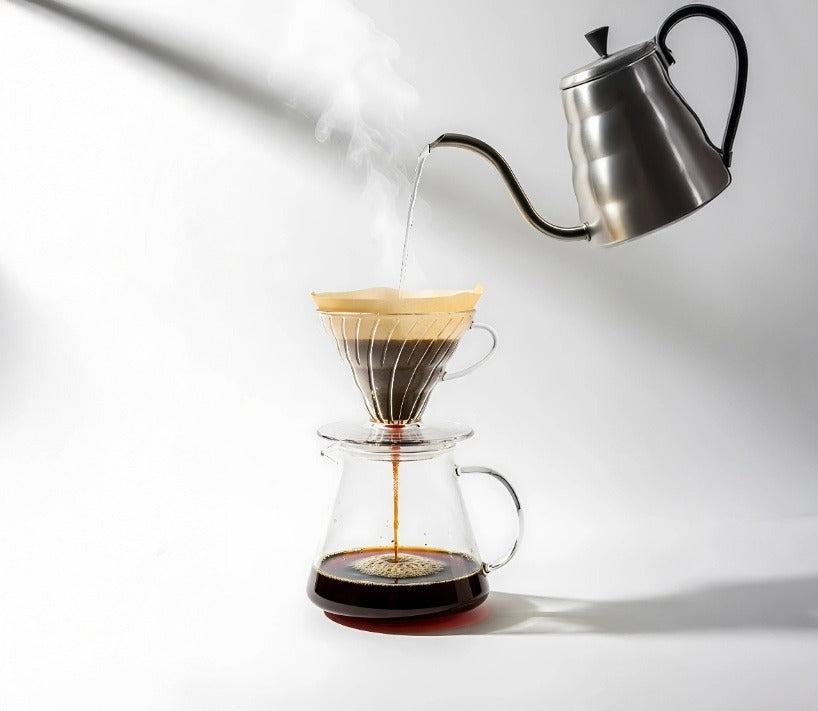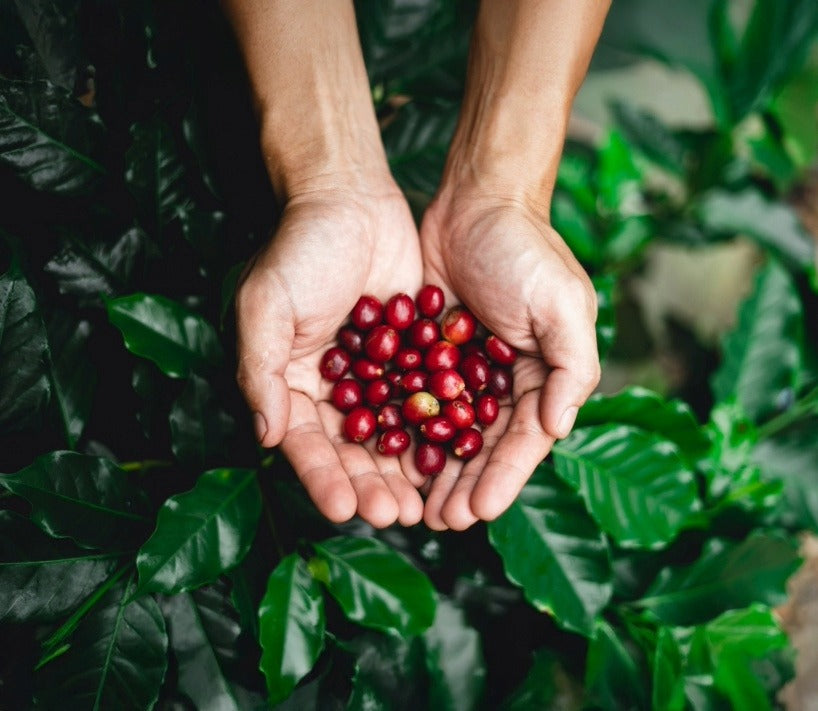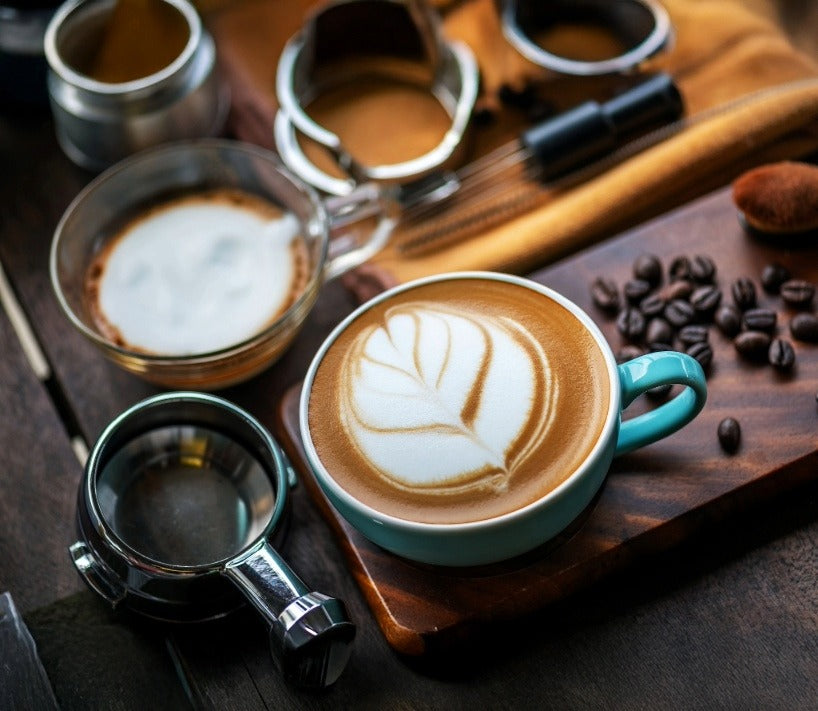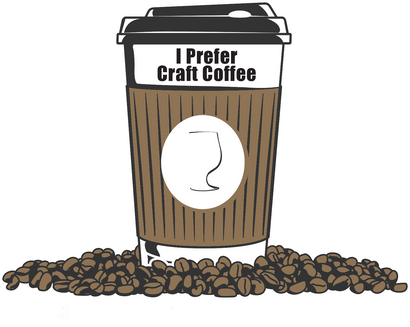Roast-To-Order Meets Bean-To-Cup (Push Button, Get “Whoa”)
August 20, 2025 6 min read
Best Tasting Whole Bean Coffee Online: Roast-To-Order Meets Bean-To-Cup (Push Button, Get “Whoa”)
The “Magic Button” Morning
Imagine this: I roast your beans today, ship them today, and your super-automatic espresso machine says, “Hi, friend!” You pour in the beans, press one button, and—ta-da!—best craft coffee at home like a tiny café lives on your counter. It’s like a science fair, but you actually get to drink the trophy.
Here’s the playground-level promise: Roast-To-Order + Bean-To-Cup = Flavor you can taste + time you get back. This article is a simple story-style playbook to help you order coffee online like a pro, pick the best coffee bean delivery, and turn your super-automatic from “meh” to “legend.” We’ll keep it fun, use short words, and still be very accurate.
Oh—and we’re not selling anything here. This is free help for finding the best coffee to buy online, spotting the freshest craft coffee online, and brewing it like a wizard with a button.
Why This Combo Works (And Why It’s Not Just Hype)
Let’s connect the two superheroes.
1) Roast-To-Order = Freshness You Can Verify
-
Roast date matters more than “best by.” Coffee is a fresh food. A real roast date says, “I was born on Tuesday.”
-
Prime window (general guide):
-
Light roast: best days 3–7 post-roast (opens up), often great through day 14+
-
Medium roast: best days 2–10
-
Dark roast: best days 1–7 (degasses faster)
-
-
Why same-day roast & ship helps: You’re actually getting into the flavor window, not meeting beans that already told their best jokes.
2) Bean-To-Cup = Convenience Without Guesswork
-
Super-automatic espresso makers grind, dose, tamp, and brew for you.
-
You still get flavor control: small grind clicks, strength settings, and a few sips of “Hmm” until it’s “Heck yes.”
-
Perfect for busy humans who prefer push-button repeatability over laboratory cosplay.
3) Flavor Chemistry (Tiny but Mighty)
-
Lighter roasts preserve delicate aromatics (fruit, florals).
-
Medium roasts emphasize caramel and chocolate sweetness (Maillard reactions).
-
Darker roasts push roasty, smoky notes with heavier body.
-
Super-automatic machines usually vibe best with medium (and medium-light or medium-dark) because:
-
too light = harder to extract (needs finer grind, steady temp)
-
too dark = oilier beans (more frequent cleaning)
-
Translation: roast-to-order gives you peak freshness, and bean-to-cup turns that into repeatable cups on school-bus mornings.
The Button-Brew Playbook
Follow these steps to turn “button” into “brilliant.”
Step 1: Pick Beans On Purpose (Quick Taster Map)
-
If you like chocolatey/comfort: choose medium roast, washed or honey process.
-
If you like fruity/sparkly: choose light–medium roast, natural process.
-
If you like bold/classic: choose medium-dark roast, washed process.
Step 2: Check Freshness (No Guessy-Guess)
-
Look for roast date on the page or bag.
-
Aim to brew within 2–14 days of roast for most super-automatics.
-
Avoid listings that only show “best by” or ship weeks later.
Step 3: Set Up Your Super-Automatic (60-Second Quick Start)
-
Water first: Use clean water around 75–150 ppm hardness (not super soft, not rock soup).
-
Bean hopper: Pour in your roast-to-order beans. Keep the bag sealed and cool; refill as needed (don’t top all the way up if you brew slowly).
-
Grind setting: Start near the middle setting of your machine.
-
Shots taste sour/thin → nudge finer.
-
Shots taste bitter/ashy → nudge coarser.
-
-
Strength/dose: Begin at the machine’s default; increase dose/strength if cups feel weak, decrease if muddy.
-
Temperature: If your model allows, set medium-high for light/medium roasts; medium for darker roasts.
-
Milk: For drinks like cappuccinos, start with cold milk and clean the frother after each use.
Step 4: Taste-Fix in Two Sips (Kid-Simple, Science-Smart)
-
Too sour / too sharp: grind finer, raise temp one notch, or slide toward medium roast next bag.
-
Too bitter / too harsh: grind coarser, drop temp one notch, or try a lighter roast next time.
-
Too flat / boring: try natural or honey process for more aroma sparkle; or nudge grind finer.
Step 5: Keep It Clean (Machines Like Bubble Baths)
-
Empty the dreg box and drip tray often.
-
Brush the grinder path weekly (check your manual).
-
If oils build up (darker roasts), run cleaning cycles more often.
-
Descale on schedule—your taste buds and machine live happily ever after.
Quick Comparison Table: Which Path Fits Your Mornings?
| Scenario | Roast-To-Order + Bean-To-Cup | Grocery-Shelf Whole Bean | Café To-Go | Pod Machine |
|---|---|---|---|---|
| Freshness Signal | Roast date (days old) | Often “best by” only | Unknown | Unknown |
| Per-Cup Cost | Low after machine | Low–medium | Highest | Medium–high |
| Time Per Cup | 1–2 minutes | 5–7 min (grind + brew) | 10–20 min round trip | 1 minute |
| Flavor Control | High (grind/dose tweaks) | High (manual) | Low | Low |
| Aroma & Body | Peak in prime window | Variable | Variable | Consistent but lighter |
| Cleanup | Rinse + empty trays | Filter cleanup | Car ride | Empty pod |
| Notes | Best blend of convenience + quality | Cheaper, but freshness uncertain | Social treat, not daily “fast” | Fast, but less complex flavor |
Use this with your shopping list for the Best Tasting Whole Bean Coffee Online: target fresh roast dates, choose the roast/process that matches your vibe, and let the machine do the heavy lifting.
Flavor Decoder Ring (So You Pick Like a Pro)
Processes (what happens to the fruit):
-
Washed: clean, crisp, tea-like clarity.
-
Natural: fruit-forward, jammy, big aromatics.
-
Honey: round sweetness, balanced fruit/caramel.
-
Anaerobic: tropical, spiced, sometimes quirky—start small.
-
Wet-hulled (often Sumatra): deep, earthy, syrupy body.
Roast Levels (what the heat does):
-
Light: high aromatics, higher acidity, lighter body.
-
Medium: chocolate/caramel, balanced acidity, medium body.
-
Dark: low acidity, heavy body, roasty/bitter-sweet cocoa.
Pairing Tips for Super-Automatics:
-
Medium & medium-light play nicest with built-in grinders.
-
Light can be awesome, but may need finer grinds and warmer temps.
-
Dark tastes classic, but watch oils—clean more often.
Smart Shopping Checklist (60 Seconds)
-
Freshness: roast date shown, frequent roast days, fast ship.
-
Style match: roast level stated (light/medium/dark).
-
Process shown: washed/natural/honey/anaerobic/wet-hulled.
-
Tasting notes: realistic (cocoa, caramel, cherry), not pretend perfume.
-
Transparency: origin, variety, altitude when available.
-
Delivery: look for best coffee bean delivery options that fit your schedule; watch for the best coffee online free shipping deals if that matters to you. Just make sure it's fresh specialty coffee.
Fresh On-Page Coffee Hacks You Can Use Right Now
-
Copy-paste note to any roaster:
“Hey! I’m using a super-automatic bean-to-cup machine. I like [chocolatey / fruity / bold] flavors and [light / medium / dark] roast. Do you have something with a roast date this week and [washed / natural / honey] process? Bonus if the notes include [caramel / blueberry / dark chocolate].” -
Pantry label template:
-
Coffee name & origin: ______
-
Roast date: ______
-
Open date: ______
-
Grind setting on my machine: ______ (finer/coarser arrow)
-
-
Five-day flavor plan:
Day 1–2: admire bag, let beans rest (especially light/medium).
Day 3: first button-brew; tiny grind tweak.
Day 4: adjust dose/strength if needed.
Day 5: lock settings; enjoy auto-perfect mornings.
FAQs For The Curious Human
Q1: How long after roast should I start brewing on a super-automatic?
A: For medium roasts, days 2–10 are usually prime. Light roasts often shine 3–14; dark roasts are tasty 1–7. Try first sips around day 3 and tweak.
Q2: Are oily beans bad for bean-to-cup machines?
A: Not “bad,” but darker, oilier beans ask for more frequent cleaning. If your grinder path gums up, use slightly lighter roasts or clean weekly.
Q3: Can super-automatics handle light roasts?
A: Many can, but light roasts tend to need finer grind and higher temperature. If your machine struggles, pick medium-light naturals for fruit without drama.
Q4: What water should I use?
A: Aim for 75–150 ppm total hardness. Too soft tastes flat; too hard invites scale monsters. Filtered water is your friend.
Q5: Whole bean vs pre-ground for bean-to-cup?
A: Whole bean is required—the machine does the grinding. That’s part of the flavor magic.
Q6: How should I store beans?
A: Cool, dark, dry, sealed bag with a one-way valve. Don’t fridge/freezer daily-use beans; moisture is a sneaky villain.
Q7: Which roast & process are safest for “classic café” flavor?
A: Try medium to medium-dark, washed or honey process, with notes like chocolate, caramel, toasted nuts.
PS (Your Tiny Homework—Big Taste)
Pick one fresh roast date bag that fits your flavor lane, pour it in the hopper, and make one small grind click or adjustment after your first cup. That’s it. The best button is the one you press—on purpose.
Also in Best Coffee To Buy Online Education

Biggest Mistake With Pourover Coffee: It's Your Beans
January 02, 2026 3 min read
Learn how to brew the best pourover coffee at home with the best tasting craft coffee online. Remember, the best coffee to drink at home starts with the freshest craft coffee online, not the bargain bin beans at your local supermarket.

Specialty Roast Coffee Beans Online: What’s the Deal, Really?
January 01, 2026 4 min read
You'll learn what specialty roast coffee beans online actually means, and why it translates to the best tasting craft coffee at home.

High-Score Coffee Beans Online: Why 85+ Points Actually Matter
December 31, 2025 3 min read
Learn why the best tasting craft coffee online is high-scoring specialty coffee that tastes better and how to choose the right beans online. Order coffee online from a roaster you trust.
